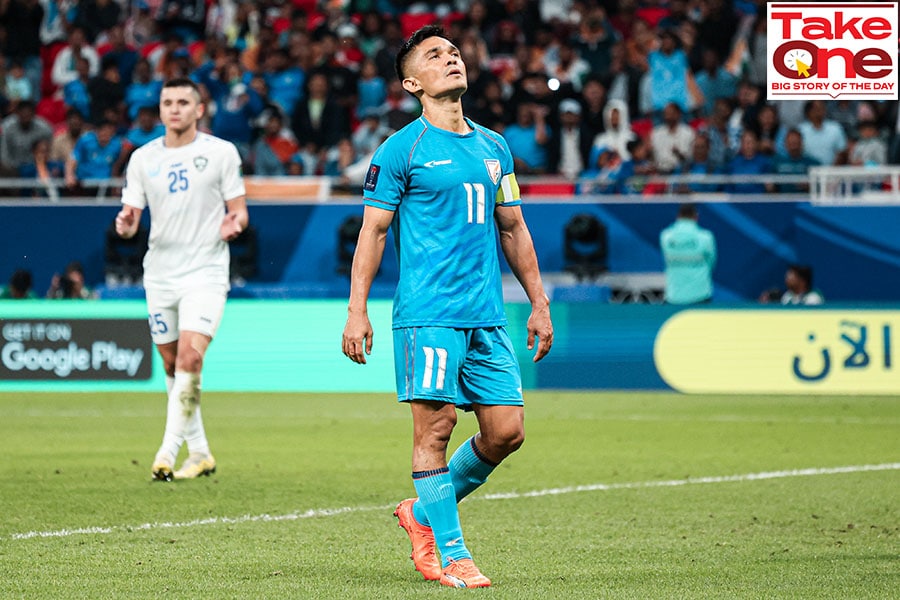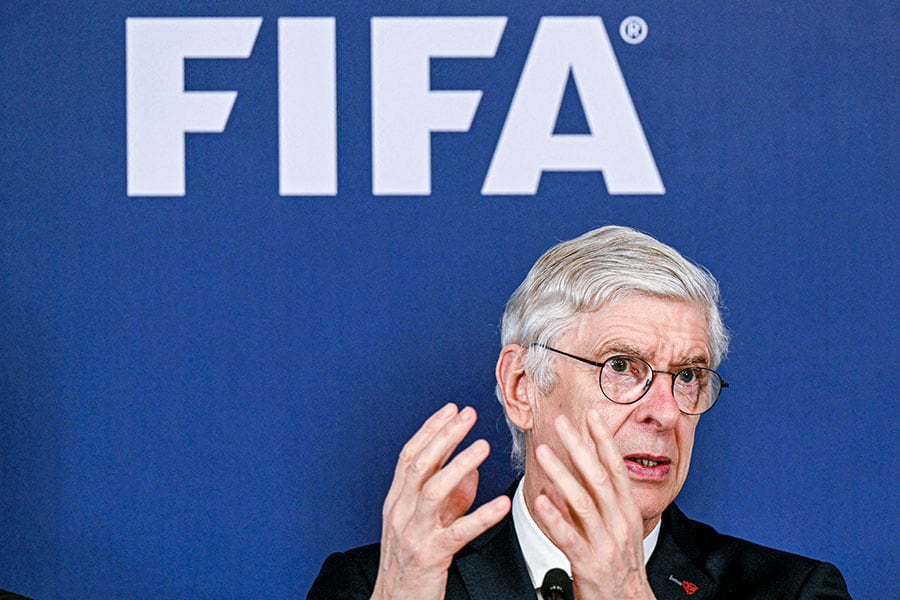
Arsene Wenger and the silver lining to India's recent football setbacks
While a number of international outfits have forayed into India without noticeable success, can the former Arsenal boss set the template for a successful engagement?
 Sunil Chhetri reacts during the AFC Asian Cup Group B match between India and Uzbekistan in Doha in January. Image: Zhizhao Wu/Getty Images
Sunil Chhetri reacts during the AFC Asian Cup Group B match between India and Uzbekistan in Doha in January. Image: Zhizhao Wu/Getty Images
A few days after India departed from the group stages of the AFC Asian Cup with three losses in three matches, football pundit Joe Morrison revealed a startling fact he stumbled upon during a conversation with some Indian players at the tournament in Qatar. “They told me it took them one or two days to get up to speed and pace of the training pitches themselves–the pitches were so quick,” said Morrison during a podcast with Forbes India. “That tells me how slow the game is in India–no matter what the hype and hoopla is with the ISL… the quality and standards in terms of infrastructure and facilities are just not there.”
Omar Khribin, Morrison goes on, the player who scored the winning goal in the match against Syria–a country that, at 91, is ranked at a similar level to India’s 102–has previously played for Al-Hilal, where Neymar now plays, and is now a part of Al Wahda, which features in the UAE Pro League. “Syria has players playing all over the world, India doesn’t,” he adds.
A few months prior to India’s drubbing at the AFC Asian Cup, a lanky septuagenarian–who has coached English club Arsenal for nearly two decades and led them to an undefeated season in 2003-04, earning them the moniker of Arsenal Invincibles—watched Asian champions Qatar hand out a 3-0 defeat to India in the World Cup Qualifiers at the Kalinga Stadium in Bhubaneswar. “What we have seen at the moment, we are absolutely sure they are not good enough. I have seen them play against Qatar. It was a shock to me,” Arsene Wenger later told Forbes India in an exclusive interview.
While Wenger reinforced the belief that India still had a long way to go before joining the global conversation on football, in his visit lay a silver lining—the Frenchman, now the chief of global football development at Fifa, the sport’s governing body, was in Bhubaneswar in November to inaugurate the AIFF-Fifa football academy. The academy will house a residential facility for 50 talented, young footballers scouted from across the country.
“India’s huge asset is the population, and, at the moment there's a huge handicap in the size of a country. So we have to focus on academies and developing the technical quality of the players. We are opening the first academy and that's an example that everybody should follow. You need to work on grassroots football,” Wenger further says.









